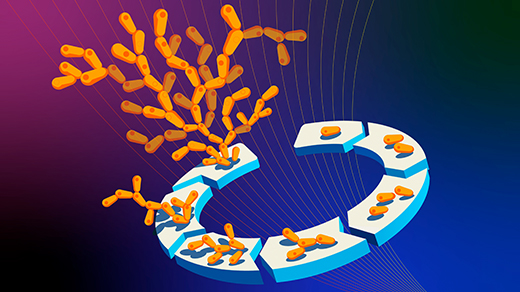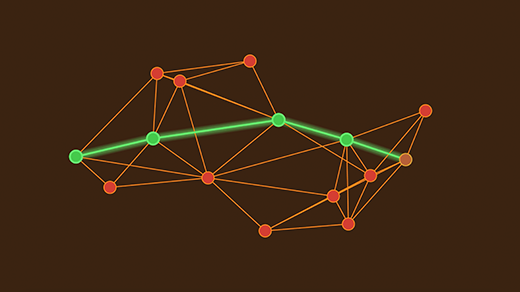Meet the Eukaryote, the First Cell to Get Organized
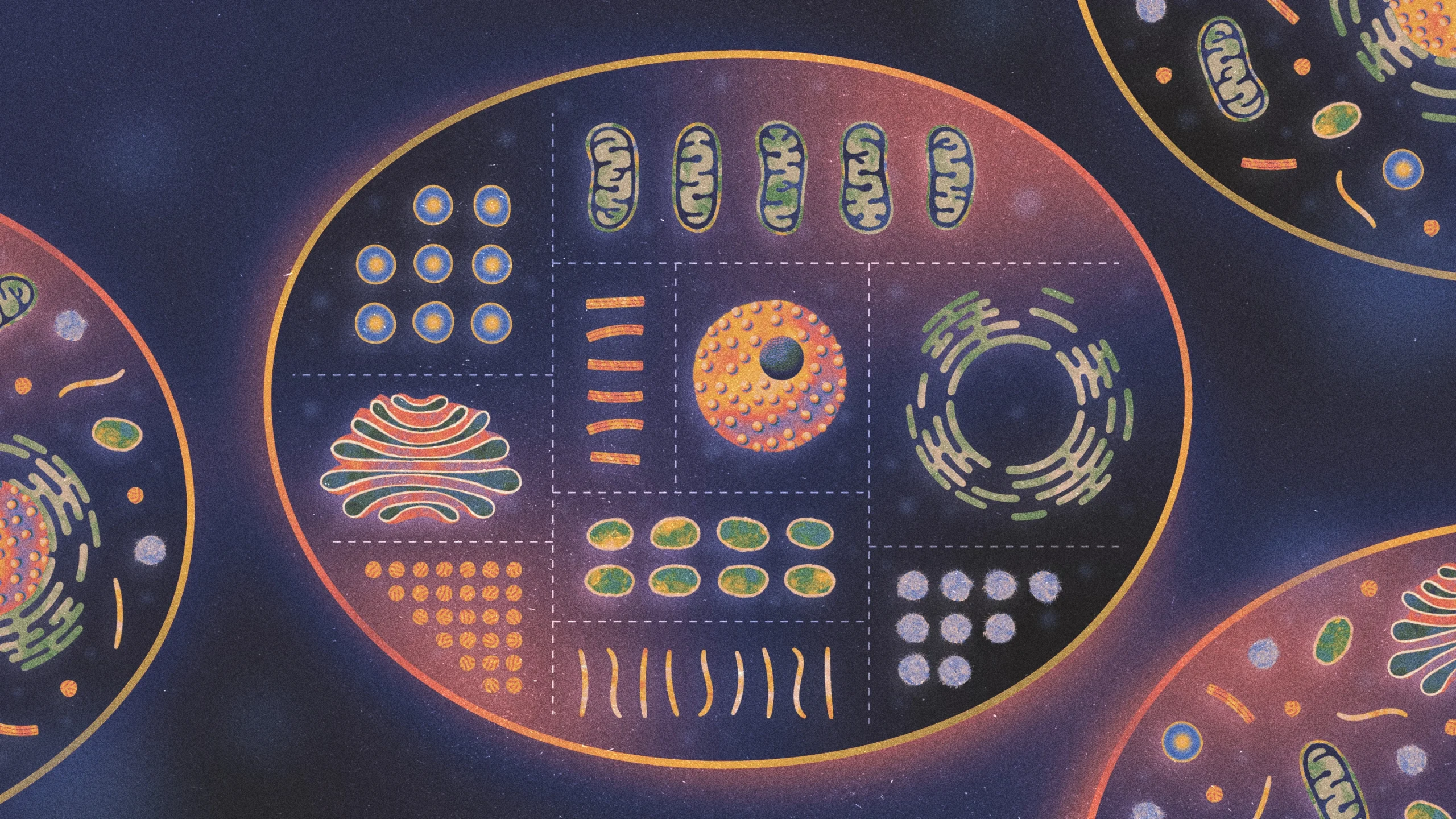
The eukaryotes invented organization, if we use the literal definition of “organize”: to be furnished with organs.
Kristina Armitage/Quanta Magazine
Introduction
Three billion years ago, life on Earth was simple. Single-celled organisms ruled, and there wasn’t much to them. They were what we now call prokaryotic cells, which include modern-day bacteria and archaea, essentially sacks of loose molecular parts. They swirled together in shallow, primordial brews or near deep-sea ocean vents, where they extracted energy from the environment and reproduced by dividing one cell into two daughter cells. Then, one day, that wilderness of simple cells cooked up something more complex: the ancestor of all plants, animals and fungi alive today, a cell type known to us as the eukaryote.
The eukaryote’s debut transformed the planet. Today, all complex multicellular life — indeed, all life that any of us regularly see — is made of eukaryotic cells. No one knows for sure how that first eukaryote arose, but biologists believe that it took at least a billion years of interactions between bacterial and archaeal cells for it to finally come into being.
“Eukaryotes are this bananas chimera of bacteria and archaea,” said Leigh Anne Riedman, a paleontologist who studies early life at the University of California, Santa Barbara. “We are still trying to sort out exactly how it happened and who was involved.”
The eukaryotes invented organization, if we use the literal definition of “organize”: to be furnished with organs. Inside a eukaryotic cell are self-contained, membrane-bound bundles that perform special functions, called organelles. All eukaryotic cells — animal, plant, fungus or protist — have a nucleus that encloses and protects DNA. Nearly all of them have mitochondria, which produce energy to fuel biochemical reactions. (Any eukaryotic lineages that lack mitochondria used to have them and then lost them sometime in evolutionary history.) And across the evolutionary tree, different eukaryotes have evolved or procured additional organelles that assemble proteins, store water, turn sunlight into energy, digest biomolecules, get rid of waste, and more. If prokaryotes are a loose pile of papers on the floor, eukaryotes are a sophisticated filing system that binds pages into packets and labels them.
“They’ve got the endoplasmic reticulum, Golgi apparatus, peroxisomes, lysosomes, vacuoles — all this machinery not present in bacteria or archaea cells,” said Thijs Ettema, an evolutionary microbiologist at Wageningen University in the Netherlands.
How this all happened isn’t entirely clear, but today, most experts agree that 2 billion or 3 billion years ago, an archaean cell engulfed a bacterial cell, which somehow escaped digestion and adapted to life inside its host. That bacterium evolved to become the organelle we now know as the mitochondrion.
Since that original act, the eukaryote has transformed again and again. It first evolved into a smattering of unique unicellular creatures, such as the ancestors of modern diplomonads, which swim with dual tail clusters, and the parasitic microsporidians, which shoot out coiled tubes to infect victim cells.
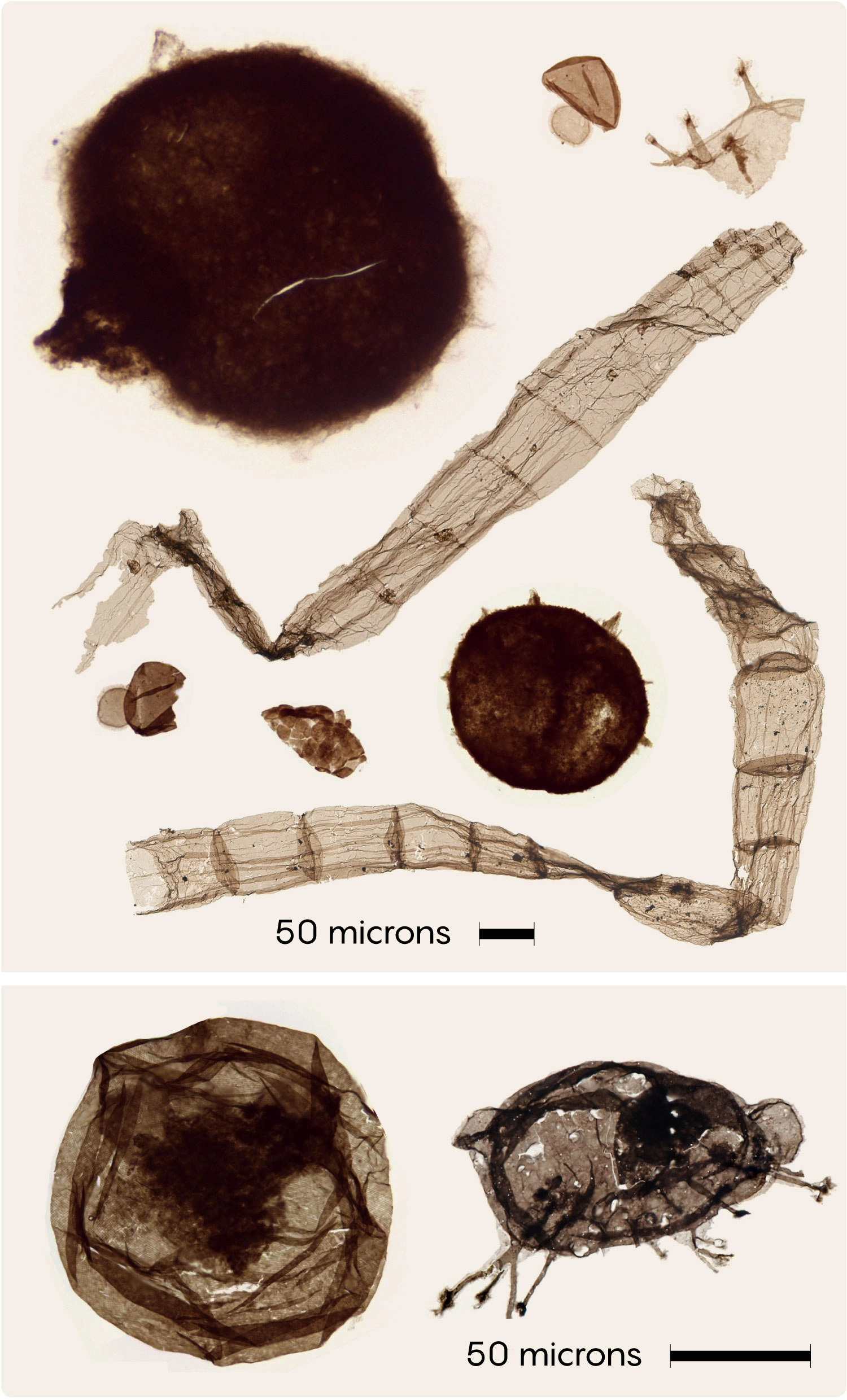
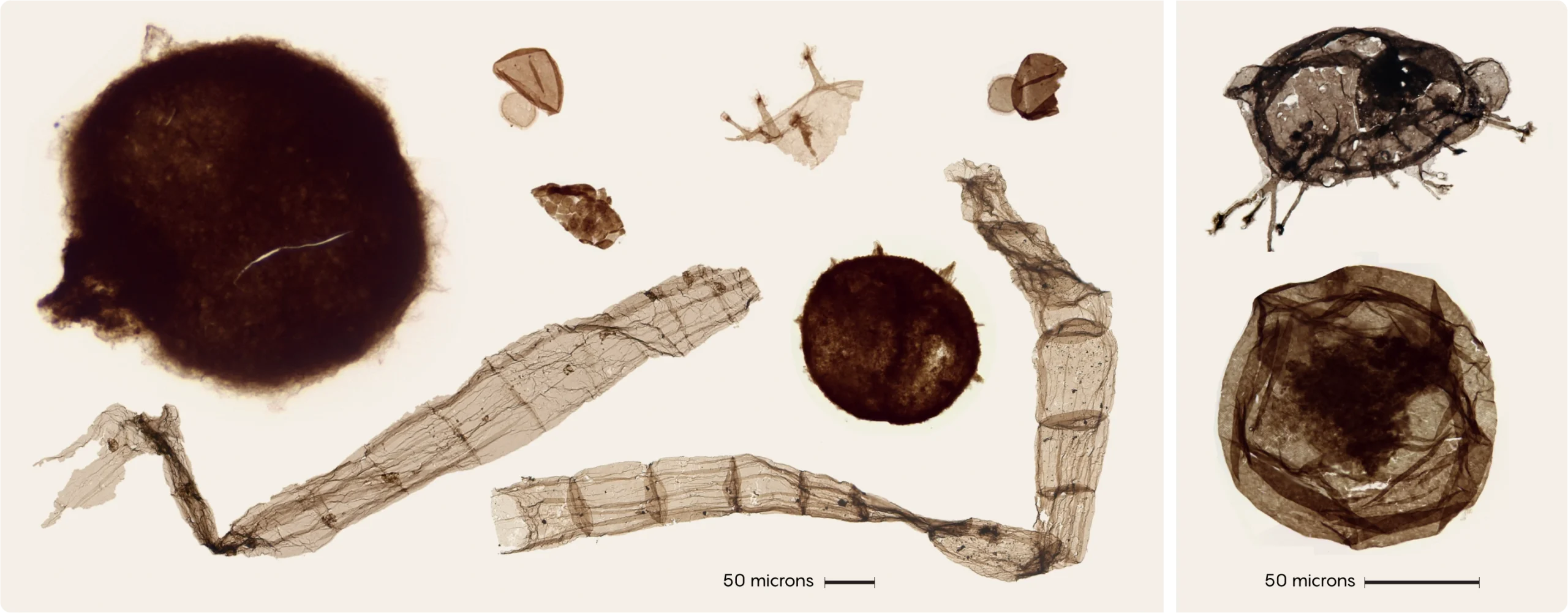
These are among the oldest known fossils of eukaryotic cells, estimated to be between 1.4 billion and 1.65 billion years old. Left: A variety of fossils from the Limbunya Group in Northern Territory, Australia. Top right: Tappania plana from Montana. The delicate membrane and leglike protuberances are indicative of eukaryotic complexity. Bottom right: Valeria lophostriata from the Northern Territory, Australia.
Courtesy of Nick Butterfield
At some point, in a sequel to mitochondrial capture, a eukaryote engulfed a cyanobacterium capable of photosynthesis — the process of using sunlight to harvest carbon from the air and spin it into energy. That branch of the eukaryotic family, freshly equipped with green organelles called chloroplasts, evolved into plants and other photosynthesizers.
Then, within the last billion years, some individual eukaryotes began working together. Collectives became colonies, and they further organized when entire cells began to specialize, or perform unique functions within a complex multicellular body. Multicellularity unlocked even higher levels of sophistication, resulting in mushrooms, trees, hippos and humans.
Eukaryotes have since spread across the world, breaking out of primordial pools to colonize glaciers, deserts and everywhere in between. Eukaryotes have been hugely successful because we are big, mobile and hungry. “The niche of macroscopic life was available for the taking,” Ettema said. Eukaryotes emerged to find a vacant role and evolved to fill and expand it.
The First Host
For many decades, biologists considered eukaryotes to be one of three main domains of life on Earth. Life is composed of three distinct cell types: bacteria and archaea, which are both prokaryotic cells with some key differences — for example in their cell membranes and reproductive strategies — and then there are eukaryotes, which are a much different kind of cell. Experts believed that bacteria, archaea and eukaryotes each evolved independently from a more ancient ancestor.
However, recent research has changed that view. Over the past few decades, a two-domain tree has prevailed, in which eukaryotes emerged from within archaea rather than alongside them. The theory is supported by recent efforts to uncover the identity of our most recent prokaryotic ancestor — the ancient cell that first enclosed a bacterium, resulting in the eukaryotic cell type. Over the last decade, the discovery of Asgard archaea, our closest living prokaryotic relatives, has offered valuable clues.
Mark Belan/Quanta Magazine; source: 5W Infographics
In 2015, Ettema went looking for that mysterious first host cell in a field of sulfide chimneys at the bottom of the Atlantic Ocean. Underwater vents are good candidates for the nursery of that original cell because they spout hot water rich in chemical energy, which some prokaryotes can use to make energy for themselves. His team collected microbial slush from a site known as Loki’s Castle. Back at the lab they used a technique called metagenomics to untangle the mess of microbial DNA and reconstruct the genomes of individual cells.
Ettema and his team were surprised to find genes that looked suspiciously eukaryotic among the expected traces of archaea and bacteria. Upon further investigation, they found what might very well be the missing link in our understanding of eukaryotic evolution: a prokaryote with hallmark eukaryotic complexity in its genome. They named the microbe Lokiarchaea after its home vent.
Ettema suspected that a cell from this family, later dubbed “Asgards,” might make a convincing candidate for that first hungry host that engulfed a bacterium that became a mitochondrion. If so, he proposed, that ancient Asgard archaean might have evolved into the eukaryotic branch while the rest of its family forged on as prokaryotes.
“All Asgard archaea we see today are … failed eukaryotes,” he said.
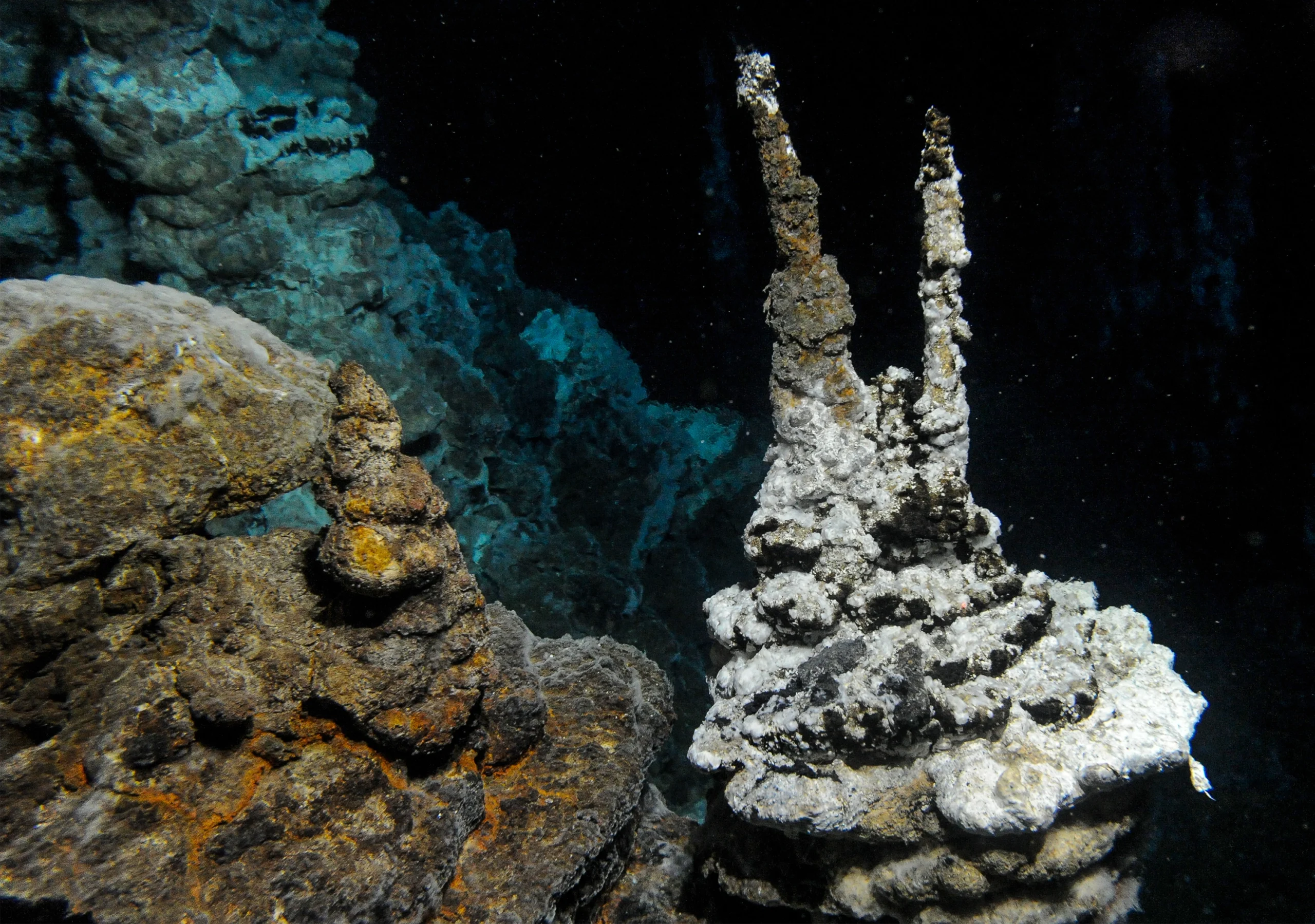
These deep-sea sulfide chimneys, called Loki’s Castle, are home to the microbe Lokiarchaea — an Asgard archaean with hallmark traits of eukaryotes in its genome. Asgards are thought to be the closest prokaryotic relatives of eukaryotes.
University of Bergen, Norway
Researchers have since dug up Asgard DNA all over the world, including in North Carolina and Yellowstone National Park. But only two labs have successfully cultured Asgard cells. Those cells reveal some eukaryote-like features, such as a cytoskeleton built with the protein actin. The rest are still under investigation, and their cellular structures are unknown.
Today, most researchers agree that Asgards are the closest known prokaryotic relatives of eukaryotes. Modern Asgards aren’t our ancestors, but we likely share an ancestor somewhere in deep time. “You could argue that eukaryotes are Asgards in the same way that birds are dinosaurs,” said Itay Budin, a biochemist at the University of California, San Diego. “They’re kind of our cousins.”
How to Get Organized
The process by which an archaean cell turned a free-living bacterium into its own cellular machinery — called endosymbiosis — remains largely obscured by evolutionary history. Most biologists believe that one prokaryote “swallowed” another in a process called phagocytosis. However, phagocytosis takes a lot of energy. In fact, it is so energy-expensive that some believe it would have been impossible without the first host cell already having energy-generating mitochondria — opening a tricky, microbial chicken-and-egg debate.
Modern Asgards offer a clue that could get us around this mind bender: Their cytoskeleton suggests that they might use tiny, armlike projections called blebs to entrap prokaryotic food, without needing mitochondria. Maybe the first eukaryotic ancestor did, too.
That’s not the only hazy part of the process. Researchers also debate whether the mitochondrial bacterium, likely from a diverse and ancient class known as alphaproteobacteria, was even the first endosymbiont. While the eukaryotic genome is a Frankenstein mashup of genes originating from archaea and bacteria, “many of these genes do not trace back to alphaproteobacteria or any bacteria nearby in the tree,” said the evolutionary biologist Toni Gabaldón, whose lab is jointly affiliated with the Institute for Research in Biomedicine in Barcelona and the Barcelona Supercomputing Center. “Maybe there were other symbionts, another organelle that left some genes. We know very little about how it went.”
Untangling the threads that trace back to the origin of eukaryotes may be impossible after billions of years of genetic scrambling. In the coming decades, combining metagenomics with other techniques, such as microbe fossil analysis and induced endosymbiosis, holds the potential to reveal more clues to our origin.
“The most fascinating thing about eukaryotes is that we still don’t understand how they came about,” Gabaldón said. “They are amazingly diverse, everywhere, and have adapted to many different lifestyles. We still have a lot to learn.”
Correction: October 28, 2024
A sentence describing the archaean host’s diet was deleted.


